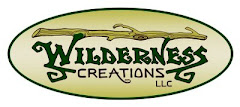
Building your own barn board furniture is a great way to be creative and add some new furniture to your home. In this blog I am not going to layout a specific project, but instead will give some tips and ideas that can be incorporated into your project. Of course, you need to start with some old weathered boards which might not be too hard once you start to look around. Perhaps you've got an old fence or wood laying around your home that you could use. How about a friend or neighbor that is discarding some wood? Your local transfer station may be a good source for free wood, sometimes there are great old boards tossed right on the burn pile. For a single project it can be best to have the wood match to some degree, so that the different parts blend well. Wear gloves when you are gathering the wood and be careful of nails and splinters.
You'll want to cut off any rotted, unstable ends so that the piece will end up structurally sound. Use a scrap to get the look that is desired. The amount of sanding can change the look quite a bit, from a gray weathered look to more of a reddish brown, with some deeper sanding. Start out with a grit of sandpaper that won't take too much off at once, maybe a 22o or so. I like to use an orbital sander for this. Cut all of your pieces for the design and start assembling. Larger pieces for legs (such as 4 by 4's) can give the piece a solid, anchored look.
A tricky thing with making barn wood furniture is how to make cuts and still have the overall item have an old look. The wood on the interior of the board has not been exposed to all of the elements so it will look light colored and newish. You can come pretty close with some stains, covering just the cut ends. If you go this route, you will want to practice on a scrap of the wood to get a good match. An even better method is to use a breadboard end on the table top (or other project) ends. This method uses a small strip of wood that is attached to the top, covering the cut end with an authentic weathered piece of wood. You don't want this piece to be too thick (about an inch or less) so that it can be attached well and have a solid result. You can glue and screw these pieces on, and even counter sink and plug your screw hole for a nice look.
Make sure you have solid supports or angle bracing so that your work will last for years to come. I like to use exposed, hand cut steel nails for some of these projects, which gives it an authentic, old look. You can find these nails, brand new, at your hardware, building supply store. If you are not hiding screws completely, or using the nails, then the black sheet rock screws can be used, which won't stand out as much as other fasteners.
For finishing, I like to use a clear natural poly whey. It goes on well and has no fumes or harsh chemicals. It also is very easy to clean up. Oils (such as a pure tung oil) give a very nice look as well, but the poly can help lock in some of the old wood fibers and can make it a bit easier to wipe down for cleaning.
Of course there are many barn board furniture projects that you can choose to build and there will be some mistakes along the way. Stick with it and have fun, and hopefully some of these rustic tips will help along the way.
Go Rustic!
Mark N.
Sources for wood finishes and complete barn board furniture:









No comments:
Post a Comment